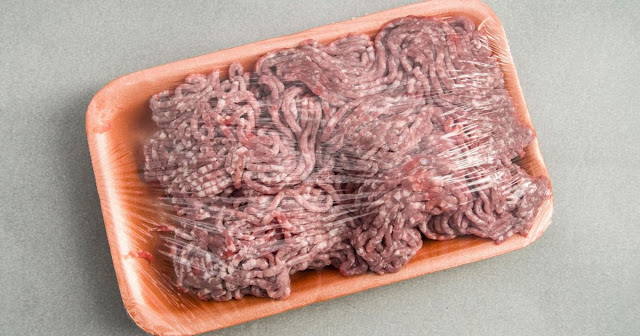ADVERTISEMENT
3. Expiration Date:
- Always check the expiration date or sell-by date on the packaging. If the beef has passed its expiration date, it may be more likely to spoil and is best discarded, even if it looks gray but doesn’t exhibit other signs of spoilage.
4. Storage Time:
- Fresh ground beef typically lasts 1-2 days in the refrigerator before it should be cooked or frozen. If it has been sitting in your fridge for more than that time, even if it’s still gray and not showing other signs of spoilage, it might be safer to discard it. If you plan to store ground beef longer than a couple of days, freezing it is the best option.
What Does the Color of Ground Beef Really Mean?
Now that we know gray ground beef doesn’t automatically mean it’s unsafe to eat, it’s helpful to understand what different colors of meat can tell you about its freshness:
- Red/Pink: Fresh ground beef that is exposed to oxygen will typically be red or pink. This is a sign of freshness and quality. If your ground beef looks red but is a little older, it’s still safe to eat, provided there are no other signs of spoilage.
- Brown: As ground beef ages, the red color can turn to brown due to the oxidation of the myoglobin. This doesn’t indicate spoilage by itself. If the beef is brown but still has a fresh smell and no off texture, it’s still safe to cook.
- Gray: Gray beef may occur due to lack of oxygen or when the meat is older. While the color change itself is not a concern, always check for other signs like odor and texture to determine its safety.
- Green or Purple: If the meat has a greenish or purplish tint, this is usually a sign of spoilage due to bacteria. This color change is less common but definitely indicates that the meat should be discarded.
How to Safely Store Ground Beef
To prevent ground beef from turning gray prematurely, follow these storage tips to extend its freshness:
- Refrigeration: Store ground beef in the coldest part of the refrigerator (usually at the back) and consume it within 1-2 days after purchase. If you won’t use it within this time, freeze it immediately.
- Freezing: If you buy ground beef in bulk or don’t plan to use it right away, you can freeze it. Place the meat in airtight containers or freezer bags to prevent freezer burn. It can be safely stored in the freezer for up to 4 months.
- Resealing: If you’ve opened the packaging and only used part of the ground beef, make sure to reseal it tightly or transfer it to an airtight container. This helps maintain its quality and prevents exposure to air, which can cause color changes.
- Thawing: Always thaw frozen ground beef in the refrigerator rather than at room temperature. This helps maintain the quality and safety of the meat.
Conclusion: Gray Ground Beef Doesn’t Always Mean It’s Bad
In summary, while it might be alarming to see gray ground beef, the color change itself is not usually a sign that the meat is spoiled or unsafe to eat. Beef turns gray for various reasons, most commonly due to oxidation or a lack of oxygen exposure. As long as the beef doesn’t show other signs of spoilage—such as a sour smell, slimy texture, or an off-putting color like green or purple—it’s likely still safe to cook and eat.
Always rely on smell, texture, and the expiration date as your primary indicators of whether ground beef is safe to consume. If you’re in doubt, it’s always better to err on the side of caution and discard the meat rather than risk foodborne illness.
By understanding how ground beef changes over time and how to store it properly, you can confidently make decisions about its freshness and avoid unnecessary food waste.
ADVERTISEMENT
